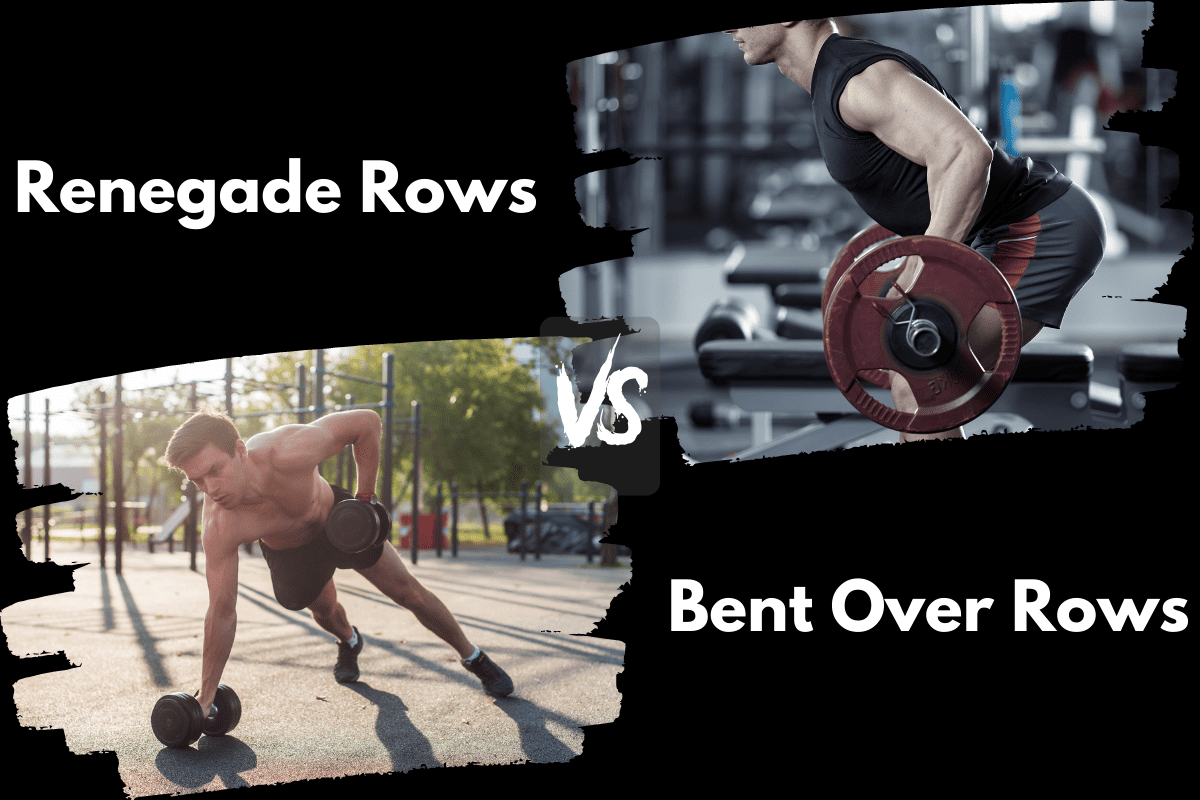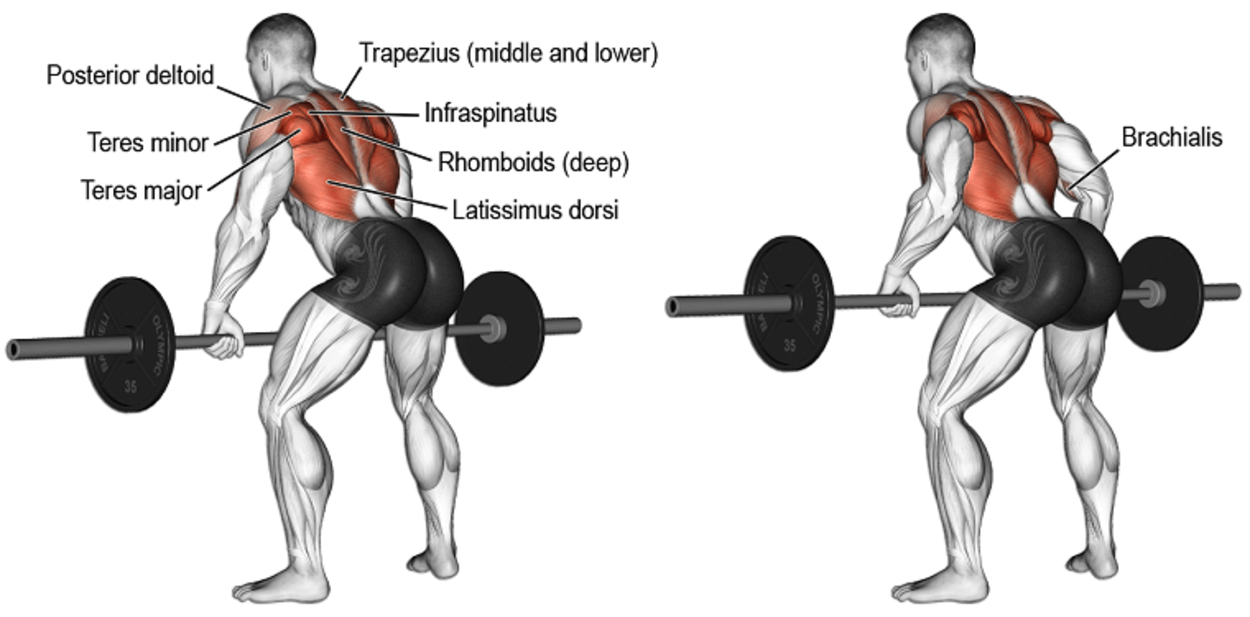Yates Row Vs Bent Over Row: Which One Reigns Supreme?
When it comes to back-building exercises, the Yates Row and Bent Over Row are two popular choices that bodybuilders and fitness enthusiasts swear by. Both exercises target the back muscles, but they differ in technique, muscle activation, and overall effectiveness. If you're confused about which one to incorporate into your workout routine, this article will break down everything you need to know about these exercises.
Strength training is not just about lifting weights; it's about doing it right. Whether you're a seasoned gym-goer or a beginner, understanding the nuances of different exercises can significantly enhance your fitness journey. The Yates Row and Bent Over Row are often compared because they share similarities but also have distinct differences that cater to specific goals.
This article will delve into the mechanics, benefits, and drawbacks of each exercise, ensuring you make an informed decision. Let's explore the world of back exercises and find out which one suits your fitness objectives best!
- Heather And Chris Dempsey 2024
- Kelly Clarkson Red Carpet
- Young Thug Dating
- Buffalo Chicken Grilled Cheese Disney
- Simone Biles Outfit Bears
Table of Contents
- Introduction to Yates Row
- Introduction to Bent Over Row
- Key Differences Between Yates Row and Bent Over Row
- Muscle Activation in Both Exercises
- Form and Technique: Yates Row vs Bent Over Row
- Benefits of Yates Row
- Benefits of Bent Over Row
- Common Mistakes to Avoid
- Which One is Better for You?
- Conclusion
Introduction to Yates Row
The Yates Row, named after legendary bodybuilder Dorian Yates, is a variation of the traditional barbell row. This exercise focuses on targeting the upper back muscles, particularly the traps and lats. Unlike the Bent Over Row, the Yates Row is performed with a more upright posture, reducing stress on the lower back while maximizing upper back engagement.
One of the standout features of the Yates Row is its ability to isolate the upper back muscles effectively. This makes it an excellent choice for those looking to build width and thickness in their back. Additionally, the Yates Row can be performed with either a barbell or dumbbells, offering flexibility in training equipment.
According to fitness experts, the Yates Row is ideal for individuals who want to avoid excessive strain on the lower back while still achieving significant muscle growth. Its unique form places emphasis on the back muscles, making it a staple in many bodybuilding routines.
Introduction to Bent Over Row
The Bent Over Row is a classic compound exercise that targets the entire back, including the lats, rhomboids, and traps. This exercise is performed by bending at the waist, keeping the back straight, and pulling the weight towards the abdomen. It is widely regarded as one of the most effective exercises for building overall back strength and muscle mass.
One of the key advantages of the Bent Over Row is its ability to engage multiple muscle groups simultaneously. This makes it an excellent choice for those looking to increase overall strength and develop a well-rounded back. Additionally, the Bent Over Row can be performed with various equipment, including barbells, dumbbells, and kettlebells, allowing for versatility in training.
Studies have shown that the Bent Over Row is highly effective in promoting hypertrophy and improving functional strength. However, proper form is crucial to avoid injury and maximize results. This exercise requires a strong core and good posture to ensure optimal muscle activation.
Key Differences Between Yates Row and Bent Over Row
While both exercises target the back muscles, there are significant differences in form, muscle activation, and overall effectiveness. Below are the key differences between the Yates Row and Bent Over Row:
- Posture: The Yates Row is performed with a more upright posture, whereas the Bent Over Row requires bending at the waist.
- Muscle Focus: The Yates Row emphasizes the upper back muscles, while the Bent Over Row targets the entire back.
- Lower Back Strain: The Yates Row reduces stress on the lower back, making it a safer option for individuals with back issues. In contrast, the Bent Over Row places more strain on the lower back, requiring careful execution.
- Equipment: Both exercises can be performed with barbells or dumbbells, but the Yates Row is often preferred with dumbbells for better isolation.
Understanding these differences can help you choose the exercise that aligns best with your fitness goals and physical condition.
Muscle Activation in Both Exercises
Muscles Targeted by Yates Row
The Yates Row primarily targets the upper back muscles, including:
- Latissimus Dorsi (Lats)
- Trapezius (Traps)
- Rhomboids
- Rear Deltoids
This exercise is particularly effective for building a wide, V-shaped back, which is highly sought after in bodybuilding. The upright posture allows for greater focus on the upper back muscles, resulting in significant hypertrophy.
Muscles Targeted by Bent Over Row
The Bent Over Row engages a broader range of muscles, including:
- Latissimus Dorsi (Lats)
- Rhomboids
- Trapezius (Traps)
- Posterior Deltoids
- Erector Spinae (Lower Back)
This compound exercise not only builds back strength but also improves core stability and posture. The involvement of multiple muscle groups makes it a powerful tool for overall muscle development.
Form and Technique: Yates Row vs Bent Over Row
Proper Form for Yates Row
To perform the Yates Row correctly:
- Start with your feet shoulder-width apart and knees slightly bent.
- Hold the barbell or dumbbells with an overhand grip, keeping your arms extended.
- Maintain an upright posture with your chest up and shoulders back.
- Row the weight towards your upper abdomen, squeezing your back muscles at the top of the movement.
- Lower the weight slowly and repeat for the desired number of repetitions.
Proper form is crucial to avoid injury and ensure optimal muscle activation. Focus on maintaining a neutral spine and engaging your core throughout the exercise.
Proper Form for Bent Over Row
To perform the Bent Over Row correctly:
- Stand with your feet shoulder-width apart and knees slightly bent.
- Bend at the waist, keeping your back straight and core engaged.
- Hold the barbell or dumbbells with an overhand grip, keeping your arms extended.
- Pull the weight towards your abdomen, squeezing your back muscles at the top of the movement.
- Lower the weight slowly and repeat for the desired number of repetitions.
Proper form is essential to avoid lower back strain and ensure effective muscle activation. Focus on maintaining a flat back and engaging your core throughout the exercise.
Benefits of Yates Row
The Yates Row offers numerous benefits, including:
- Improved upper back development
- Reduced lower back strain
- Increased muscle isolation
- Enhanced posture and core stability
According to research published in the Journal of Strength and Conditioning Research, exercises like the Yates Row can significantly improve muscle hypertrophy and strength in the upper back region. This makes it an invaluable addition to any back workout routine.
Benefits of Bent Over Row
The Bent Over Row offers numerous benefits, including:
- Increased overall back strength
- Improved core stability
- Enhanced posture and functional strength
- Greater muscle activation in multiple muscle groups
Research has shown that compound exercises like the Bent Over Row are highly effective in promoting muscle growth and improving athletic performance. This exercise is particularly beneficial for those looking to build a strong, well-rounded back.
Common Mistakes to Avoid
Regardless of which exercise you choose, it's important to avoid common mistakes that can lead to injury or reduced effectiveness. Below are some common mistakes to watch out for:
- Rounding the Back: This can lead to lower back strain and reduce muscle activation. Always maintain a flat back and engage your core.
- Using Momentum: Swinging the weight can reduce the effectiveness of the exercise and increase the risk of injury. Focus on controlled movements.
- Improper Grip: Using the wrong grip can lead to discomfort and reduce muscle activation. Experiment with different grips to find what works best for you.
- Not Squeezing the Muscles: Failing to squeeze your back muscles at the top of the movement can reduce the effectiveness of the exercise. Focus on contracting your muscles to maximize results.
Avoiding these mistakes can help you achieve better results and reduce the risk of injury.
Which One is Better for You?
The choice between the Yates Row and Bent Over Row depends on your fitness goals and physical condition. If you're looking to build upper back strength and reduce lower back strain, the Yates Row may be the better option. On the other hand, if you want to increase overall back strength and engage multiple muscle groups, the Bent Over Row is an excellent choice.
Ultimately, incorporating both exercises into your routine can provide a well-rounded back workout. Experiment with both and see which one works best for you.
Conclusion
The debate between the Yates Row and Bent Over Row ultimately comes down to personal preference and fitness goals. Both exercises are highly effective in building back strength and muscle mass, but they differ in form, muscle activation, and overall effectiveness.
By understanding the nuances of each exercise, you can make an informed decision about which one to incorporate into your workout routine. Remember to focus on proper form, avoid common mistakes, and listen to your body to achieve optimal results.
We encourage you to share your thoughts and experiences in the comments below. Have you tried both exercises? Which one do you prefer? Let us know, and don't forget to check out our other articles for more fitness tips and advice!
- Who Are The Five Living Presidents
- Hugh Grant Colin Firth Friends
- Sophie Detorres
- Northern Lights Alabama Tonight
- Natalie Portman Breast Implants

Renegade Row vs Bent Over Row (Differences & Benefits) Horton Barbell

BentOver Row VS Pendlay Row (Which is Better For Conventional
![Yates Row Vs. Pendlay Row [The Ideal Back Exercise] Fitness Day One](http://www.fitnessdayone.com/wp-content/uploads/2021/09/yates-row-vs-pendlay-row.jpg)
Yates Row Vs. Pendlay Row [The Ideal Back Exercise] Fitness Day One